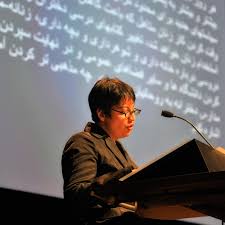The following is a Kayhan Life story based on an April 30 report by Amnesty International and Justice for Iran.
Amnesty International and Justice for Iran (JFI), a London-based non-governmental human rights organization, have joined forces to collect and disseminate information about political prisoners, human rights activists and ordinary Iranians who have been imprisoned, tortured and killed by the Iranian authorities while in jail.
“For nearly three decades, the Iranian authorities have concealed the fate and whereabouts of the victims, a practice amounting to enforced disappearance… New evidence – including satellite imagery, photo, and video analysis – shows that the Iranian authorities are deliberately destroying suspected or confirmed mass grave sites from the country’s 1988 massacre which saw thousands of political prisoners secretly killed,” said an Amnesty International and Justice for Iran report on April 30.
[aesop_image img=”https://kayhanlife.com/wp-content/uploads/2018/09/1367-009.jpg” panorama=”off” align=”center” lightbox=”on” caption=”Source: Social Media” captionposition=”left” revealfx=”off” overlay_revealfx=”off”]
PainScape is a multimedia platform (https://painscapes.com/) which has collected a vast amount of information on the fate of the victims of the 1988 massacre, including maps and locations of the mass graves. It has shared the data both in Farsi and English on its website.
Based on the information received from the families of the victims, survivors and political organizations, the JFI has been able to identify 120 sites in Iran as graves which contain bodies of three or more people. PainScape’s interactive map identifies 70 actual and potential grave sites.
Research continues on another 50 possible mass graves. PainScape has published details of 30 locations that have been confirmed to be mass graves by eyewitnesses or cemetery workers or informed persons who have seen the bodies of the deceased buried there. The authorities have reportedly bulldozed 16 mass grave sites.
According to PainScape, the JFI has received help from more than 200 people including the families of the victims, survivors, and activists inside and outside Iran who have – at great risks to themselves – visited, photographed and filmed many mass graves.
Shadi Sadr, one of the directors of JFI, says: “What distinguishes this research from similar ones conducted in other countries is that we have no access to the grave sites in Iran. Filming and photographing these locations was done under the watchful eye of security forces. PainScape is not just about the agony and grief that the families of victims have endured all these years. It is rather a geographical resistance by people who wish to keep the memories of the victims of the 1980’s oppression alive. We use the latest technology to collect and disseminate information.”

PainScape unveiled its map of the mass graves in Iran at an exhibition-seminar in London on August 29. Families of the victims and survivors of the 1980s mass killings spoke at the gathering. The event also included 14 short films of interviews with eyewitnesses and those with information about the disappearances and mass graves in Rasht, Anzali, Dezful, Jahrom, Mashhad, Isfahan, Ilam, Ahvaz, Sanandaj, Shiraz, Tehran, Ghaem Shahr and Qorveh.
Shadi Amin, one of the directors of PainScape said: “PainScape encourages readers to do their part in keeping alive the memories of all those who lost their lives. PainScape is a work in progress. It will continue to investigate and collect information until such day that forensic experts have direct and unconditional access to grave sites. It needs the help of eyewitnesses, informed individuals, survivors and families of the deceased.”
Thousands of political prisoners and human rights activists were secretly executed in various cities around the country in June and July of 1988. Most of the victims had been members of opposition political groups that had been arrested and jailed by the authorities in the early 1980s. Most if not all had been denied legal presentation and sentenced by Revolutionary Courts to life imprisonment following quick trials in kangaroo courts. Authorities never returned the bodies of the victims to their loved ones. The families have been searching for answers for the past 30 years.
August 30 marks the International Day of the Disappeared which has been set up to draw attention to the fate of individuals imprisoned in places and circumstances that are unknown to their relatives.
The UN Working Group on Enforced or Involuntary Disappearances officially listed Abdolreza and Roghiyeh Akbari Monfared, two victims of the 1988 killings, as missing and presumed dead. These cases remain open in the Working Group’s database until the fate or whereabouts of the persons are determined.
Translated from Persian by Fardine Hamidi

